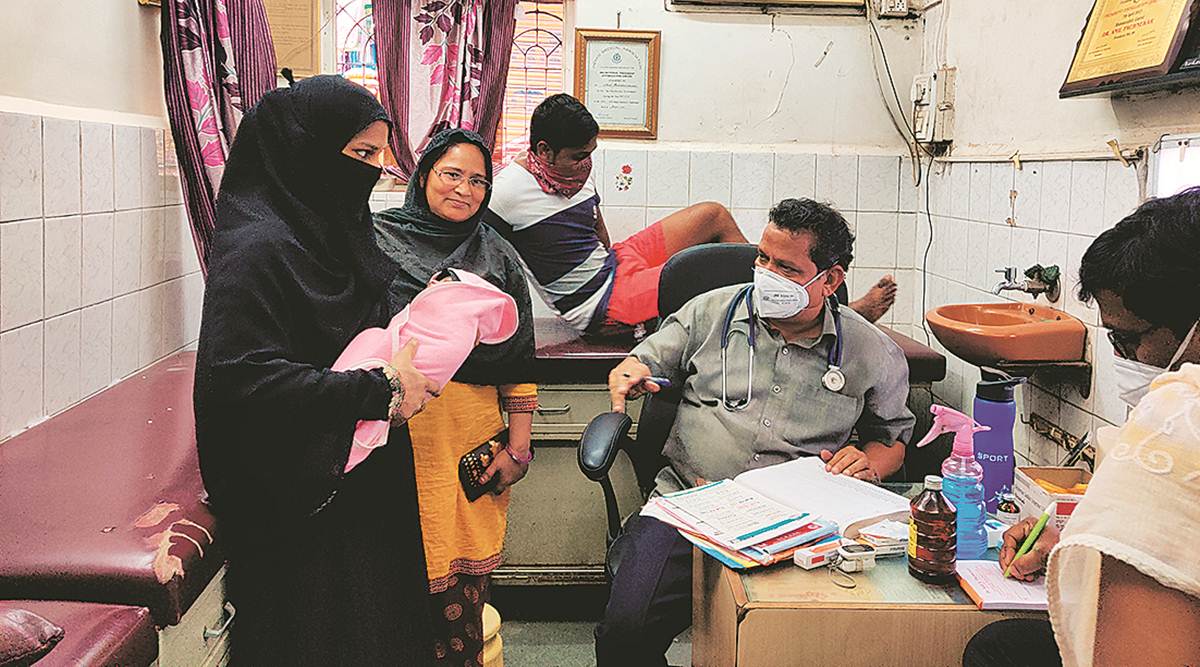
“Mumbai is the only city where I can earn enough money to fulfill my dreams, and Dharavi is the cheapest place to stay,” smiles Sandeep Pandey, summarizing why he returned to the slum in December from his village in Uttar Pradesh. “When I left Dharavi in March, I thought I would never return…. But now I’m here, ”says the 30-year-old who is now staying in one of the matchbox-like rooms in the sprawling slum. He has repaired his kali-peeli taxi and has been working 13 hours a day to make up for the loss of income.
With a population of 6.5 lakh in a radius of 2.5 square kilometers, it didn’t take long for Dharavi to become a ‘red zone’ after the first case was detected on April 1. Slum residents work as hotel waiters, home helpers and shop assistants, and the virus has caused job losses for many. “The city closed its doors to Dharavi,” says MJ Gufran, owner of a shoe store in the poor neighborhood.
However, since double-digit Covid-19 cases were reported daily in April, active cases have now dropped to less than a dozen, and “the situation is almost back to how it was before March,” says Kiran Dighavkar, BMC Deputy Municipal Commissioner. In fact, on December 25, for the first time since the pandemic began, the neighborhood did not have any new cases. “We still have test facilities, mobile camps are also held. But the cases are very few, ”says Dighavkar.
Still, demand for many of the services and items that residents provide and manufacture is low.
“But it is only a matter of time. Mumbai is the only city where people recover quickly after any crisis. The only way I can educate my two children in Allahabad is by staying here, ”says Pandey, whose earnings have dropped to Rs 200 a day from Rs 500 or more in February. He only eats one meal of dal rice a day so he can send money home. But he is optimistic. “The fear is gone, soon there will be more traffic on the roads,” says Pandey, who also hopes to save enough money to open a tabela (stable) in his village near Allahabad.
Gufran, whose shoe sales are slowly recovering, agrees. “It was difficult to stay in a room with six people during the confinement. But no one died in my family or in my neighborhood … Now, I sell 10 pairs of shoes a day. Three of my workers went home to Bihar, but they will be back soon, ”he says.
To increase business, many like Ram Babu Shah, a wallet maker, are finding new ways to reach customers. “I found most of my clients on local trains, which are not yet operational for the general public. So now I walk around the slum to sell my wallets, ”says Shah, who produces between 300 and 600 wallets, compared to 1,000 pieces, a month.
Dr Sujata Baveja, head of microbiology at the nearby Sion hospital, says Covid-19 transmission has slowed down in the slums “as most have developed immunity.” “In April-May, between 60 and 70 percent of Dharavi’s samples tested positive. Now almost no sample is positive, ”he says.
The first case from Mumbai slums occurred in March from Ghatkopar, 8 km from Dharavi. Bharati Pawar, a domestic worker, who tested positive after coming into contact with her employer who had returned from the United States, faced stigma in the slum in which she lived for several days. But soon, says his son Vishal Pawar, people realized they had nothing to fear. Now, Bharati has returned to work at the three nearby skyscrapers.
Read more from the Indian Express series, ‘Silver Lining: A Yearbook’
.